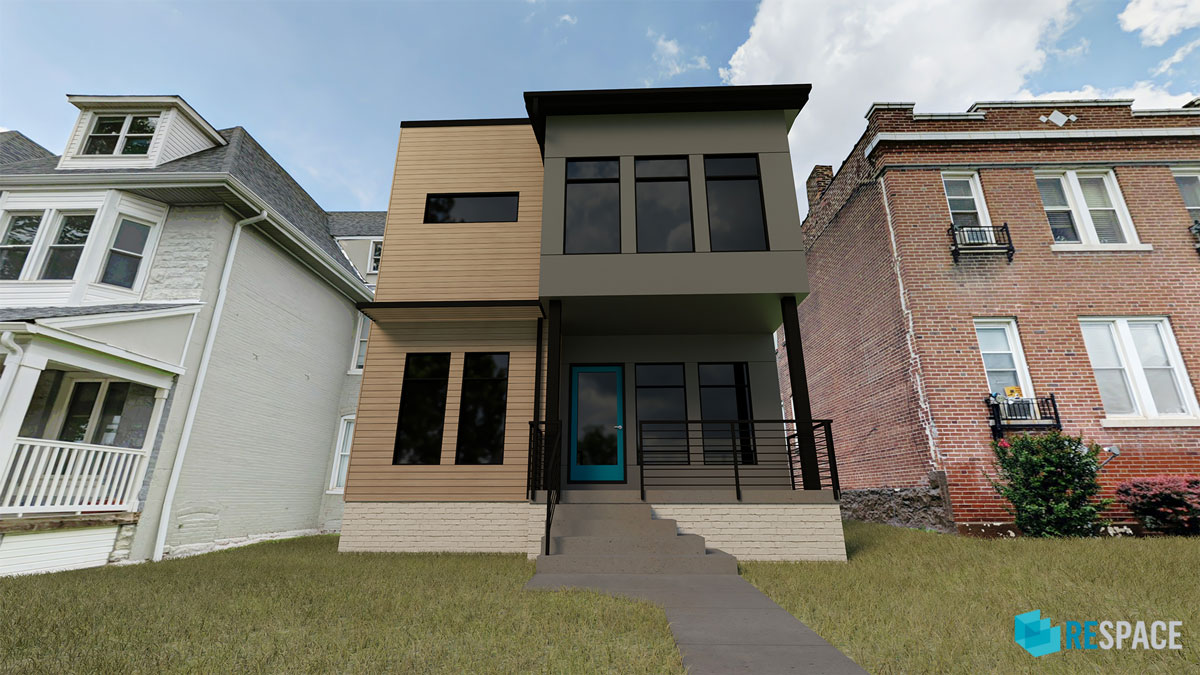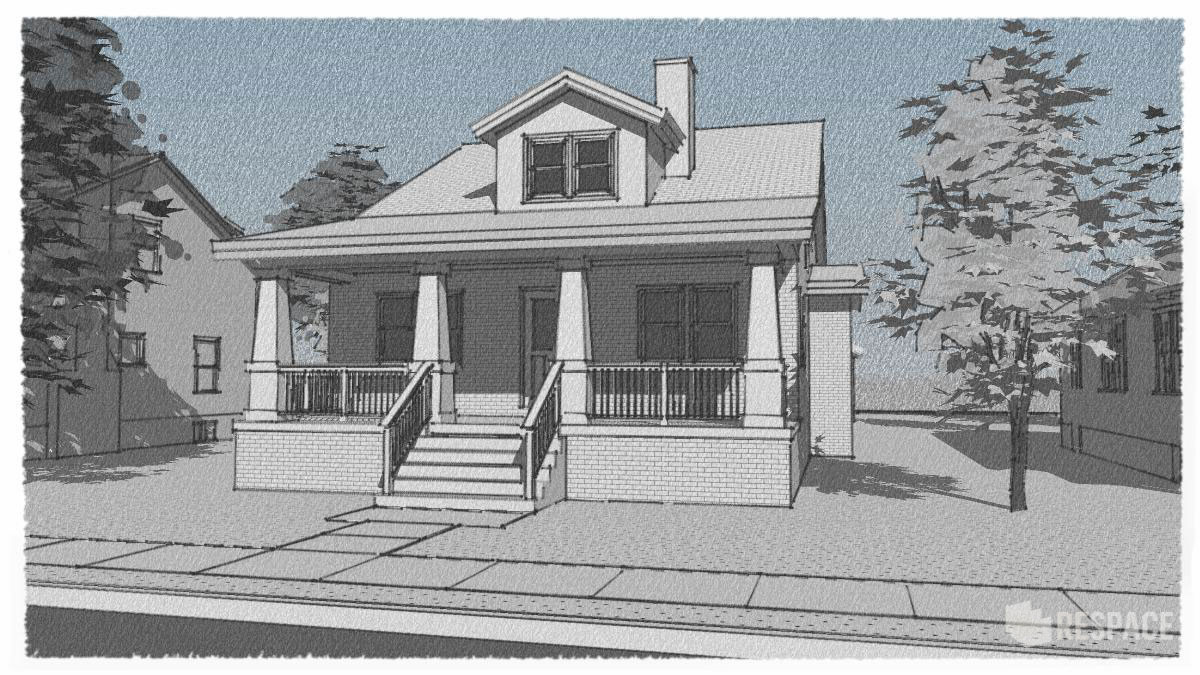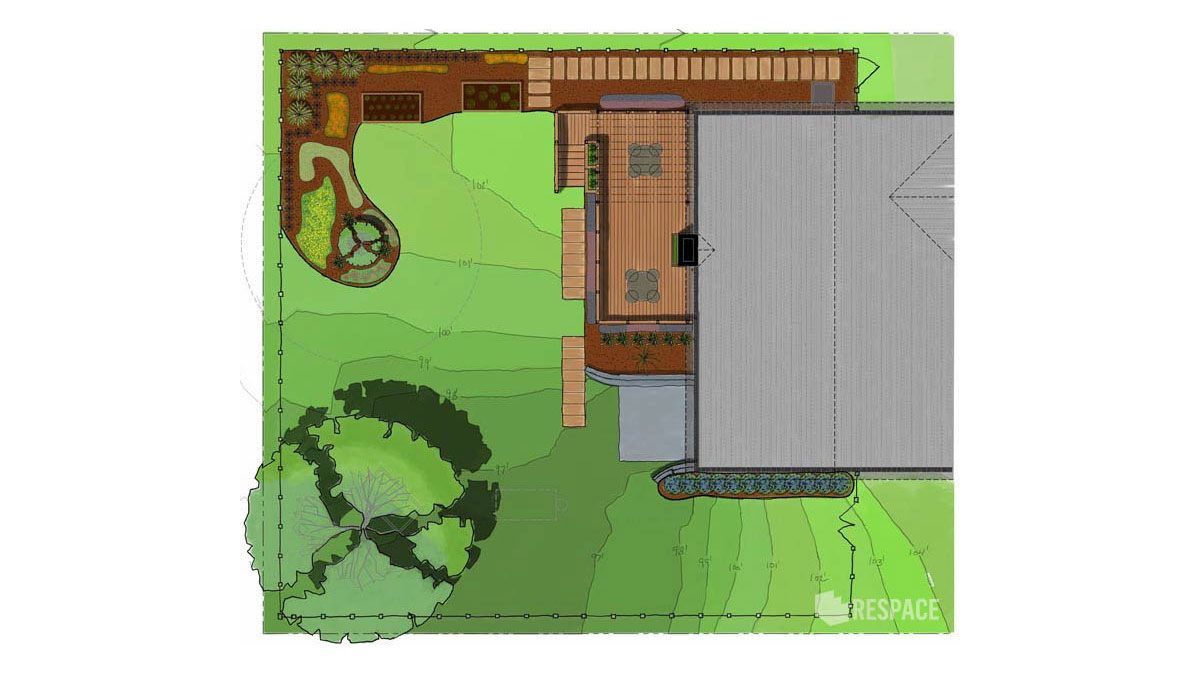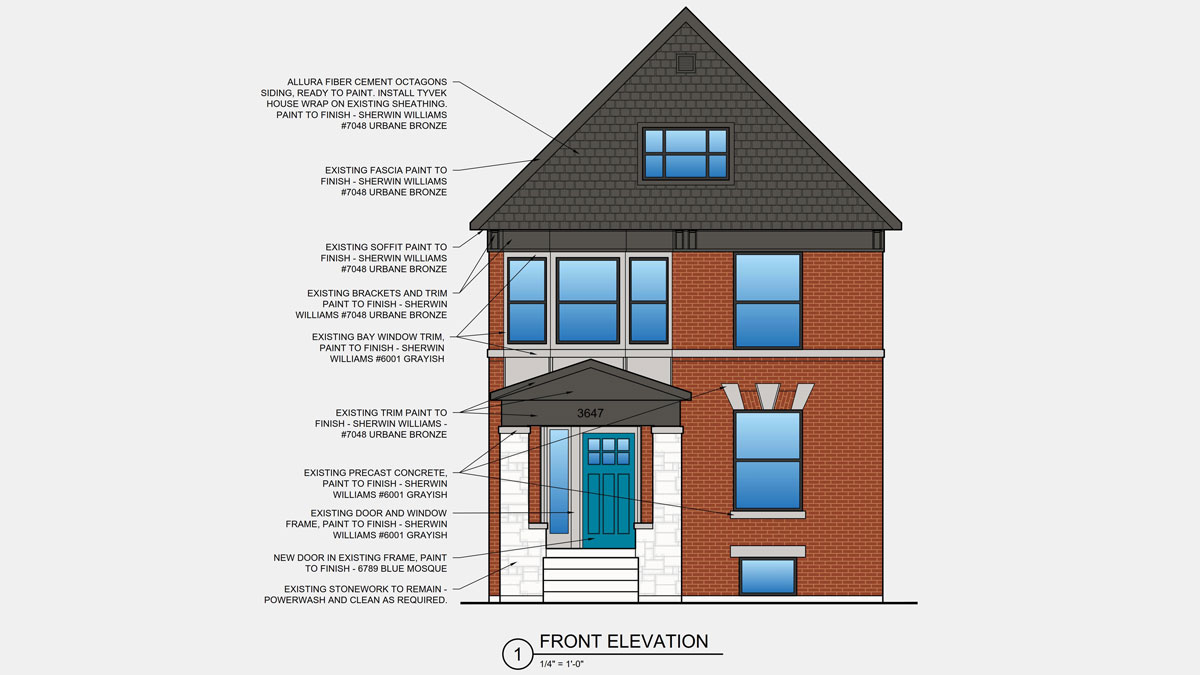To Render or Not to Render?
Today’s post is about the potential value that a photo-realistic rendering or model can provide you, the Client. I’ve split the post into commercial, developer and custom home project, so you can jump to the part that interests you. You can also read the whole thing while enjoying that cup of <insert your beverage of choice> and taking that moment of Zen. Who knows, maybe it will be useful on that next project. Before than, I’d like to clarify the terms model and rendering. A model is a complete digital construction of the interior, exterior or both that you can move through or around and view from any angle. A rendering is a static view. It can range from a line drawing with colors representing materials to photo-realistic materials and lighting presented as a photograph or photo-sphere.
Rendering for Commercial Clients
In the early stages of a project, a splash of color on a site plan or elevation can be the thing that catches a potential investor’s attention. It can also help with preliminary approval from the city. If this is your first time, cities often require this as part of their zoning process. As the design is developed further, renderings can be used to attract additional investors, secure more funding from initial investors, and provide content for your marketing campaign toward customers. 3D models and renderings can refine the design and the experience for customers and employees. A photo-realistic rendering can be the thing that finally brings those last few crucial hesitant investors on-board. They can also be added to your marketing to create more buzz and grab the attention of more potential customers. On (very) rare occasions, cities will require full photo-realistic renderings as part of their approval process for exterior remodels. I’ve even had a Landlord require a photo-realistic rendering with product on the shelves for a tenant fit-out.

Level 8 rendering by REspace Design
Rendering for Developers
As a Developer you know the building is your product and it can be residential, commercial or something else entirely. And, being familiar with the process, understand how that splash of color on your site plan or elevation can be expected by investor’s and help secure preliminary approval from the City. As the project moves forward, renderings can be used to notify investors how the project is progressing, secure more funding from initial investors, and allow you to list the property long before construction begins. On residential developments, a 3D model can be used to develop a photo-realistic architectural rendering and virtual reality experience for the property listing. Potentially allowing you to pre-sell units ahead of completing a demo unit.
Creating Your Forever Home
A rendering can help you understand the design in ways that 2D line drawings just can’t relay. Rendering can be the bridge between the abstract and the tangible. Be it a simple splash of color on that 2D drawing, a photo-realistic rendering or a full-on virtual reality experience. For your forever home, the intent is to go beyond getting it right and make it perfect. Measure twice, cut once. The combination of schematic drawings, renderings, photo-realistic renderings, construction photos and photos of the completed home can be a great way to relive and share the creative experience. It can be shared with friends and family on social media and even turned into a coffee table book. Think of it as the story of an amazing trip you took that everyone gets to see and hear at the destination instead of when you get back.

Rendering by REspace Design
In Conclusion
Whatever your project, there are benefits to be found in architectural rendering. Whether it’s achieving a full understanding of the design for your forever home, selling your great idea to investors or streamlining your development process with pre-sales, a model or rending can be a powerful tool on your next project.






